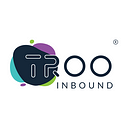How to Use HubSpot to Optimize Your Sales Funnel?
What is HubSpot?
HubSpot is a software platform that offers a suite of marketing, sales, customer service, and CRM (customer relationship management) tools to help businesses grow and manage their operations.
HubSpot was founded in 2006 by Brian Halligan and Dharmesh Shah, with the goal of transforming the way businesses attract, engage, and delight customers. The company is based in Cambridge, Massachusetts, and has offices around the world.
HubSpot’s platform is designed to be user-friendly, scalable, and integrated, allowing businesses of all sizes to manage their marketing, sales, and customer service operations from a single platform.
It also offers a range of training and support resources to help businesses maximize the value of their investment on the HubSpot platform.
Several organizations are offering the HubSpot white label services to their customers.
Modules Included in the HubSpot Platform
1. Marketing Hub
A set of tools for inbound marketing, including email marketing, social media management, blogging, lead generation, and analytics.
2. Sales Hub
A suite of tools for sales teams, including email tracking, meeting scheduling, prospecting, and CRM.
3. Service Hub
A set of tools for customer service and support, including ticketing, knowledge base, live chat, and feedback.
4. CMS Hub
A content management system for building and managing websites, blogs, and landing pages.
5. Operations Hub
A set of tools for managing data, integrations, automation, and reporting across all HubSpot modules.
Sales Funnel With HubSpot
A sales funnel in HubSpot is a graphic representation of the steps that a potential client goes through as they transition from being led to becoming a customer. Sales teams use it to track and manage their sales process.
HubSpot’s sales funnel allows sales teams to track the progress of each potential customer through the stages of the funnel, and to identify potential roadblocks or opportunities for improvement.
It also integrates with other HubSpot modules, such as marketing and customer service, allowing businesses to manage their entire customer journey from a single platform.
There are several stages that have been given a detailed about the Sales funnel of the HubSpot platform.
Sales Funnel in HubSpot Stages:
The HubSpot platform’s sales funnel is defined in four phases. This awareness of potential consumers, considerations of clients, and implementation of the same implies visitors become users. Let’s go into the specifics of HubSpot’s sales funnel stages.
1. AWARENESS
A potential customer learns more about your business and what you offer at this stage. They may have come across your website, social media profiles, or other marketing channels.
2. CONSIDERATION
At this stage, the potential customer is considering your product or service as a solution to their needs. They may have engaged with your content, downloaded a lead magnet, or requested more information.
3. DECISION
Your potential customer is ready to make a purchase of your product or service. They may have requested a demo, submitted a quote request, or engaged in a sales call.
4. CLOSE
At this stage, the potential customer has become a customer. They have made a purchase, signed a contract, or committed to a subscription.
Optimize Sales Funnel With HubSpot
1. Define Your Sales Funnel
Start by defining the stages of your sales funnel in HubSpot, from awareness to close. Make sure that each stage is clear and well-defined.
2. Set up Your HubSpot Account
Sign up for a HubSpot account and set up the Sales Hub module. Connect your email, calendar, and CRM to HubSpot.
3. Create Buyer Personas
Develop detailed buyer personas to help you understand your target audience’s needs, challenges, and preferences. Use HubSpot’s buyer persona tool to create and store your buyer personas.
4. Create Lead Nurturing Campaigns
Develop lead nurturing campaigns to engage potential customers at each stage of the sales funnel. Use HubSpot’s marketing automation tools to create and deliver targeted emails, social media messages, and other content to your leads.
5. Qualify Leads
Use HubSpot’s lead scoring tool to qualify leads based on their behavior, engagement, and demographic information. Leads that are more likely to convert will be prioritized and focused on.
6. Track Your Sales Activities
Use HubSpot’s CRM tool to track your sales activities, including emails, calls, and meetings. Keeping track of the most promising leads will help you stay organized.
7. Analyze Your Sales Funnel
Use HubSpot’s analytics tools to track your sales funnel’s performance and identify areas for improvement. Monitor your conversion rates, sales velocity, and other key metrics to identify bottlenecks and optimize your sales process.
8. Continuously Improve
Continuously test and improve your sales funnel using data and insights from HubSpot. Experiment with different messaging, content, and tactics to optimize your sales process and drive better results.
Conclusion
Lastly, Using HubSpot to optimize your sales funnel can help you streamline your sales process, engage with potential customers more effectively, and drive better results for your business.
By defining your sales funnel with the help of this guide, you can use HubSpot to optimize your sales funnel and achieve your sales goals.
By leveraging HubSpot’s suite of marketing, sales, and customer service tools, you can manage your entire customer journey from a single platform and drive growth for your business.
We were formerly a HubSpot Certified Service Provider and give our clients with full-fledged support for each HubSpot service. Nonetheless, we are pleased to inform that, as a service provider, we are now a Certified HubSpot Solutions Partner.
You can connect us anytime for more in detail conversation regarding HubSpot services.
